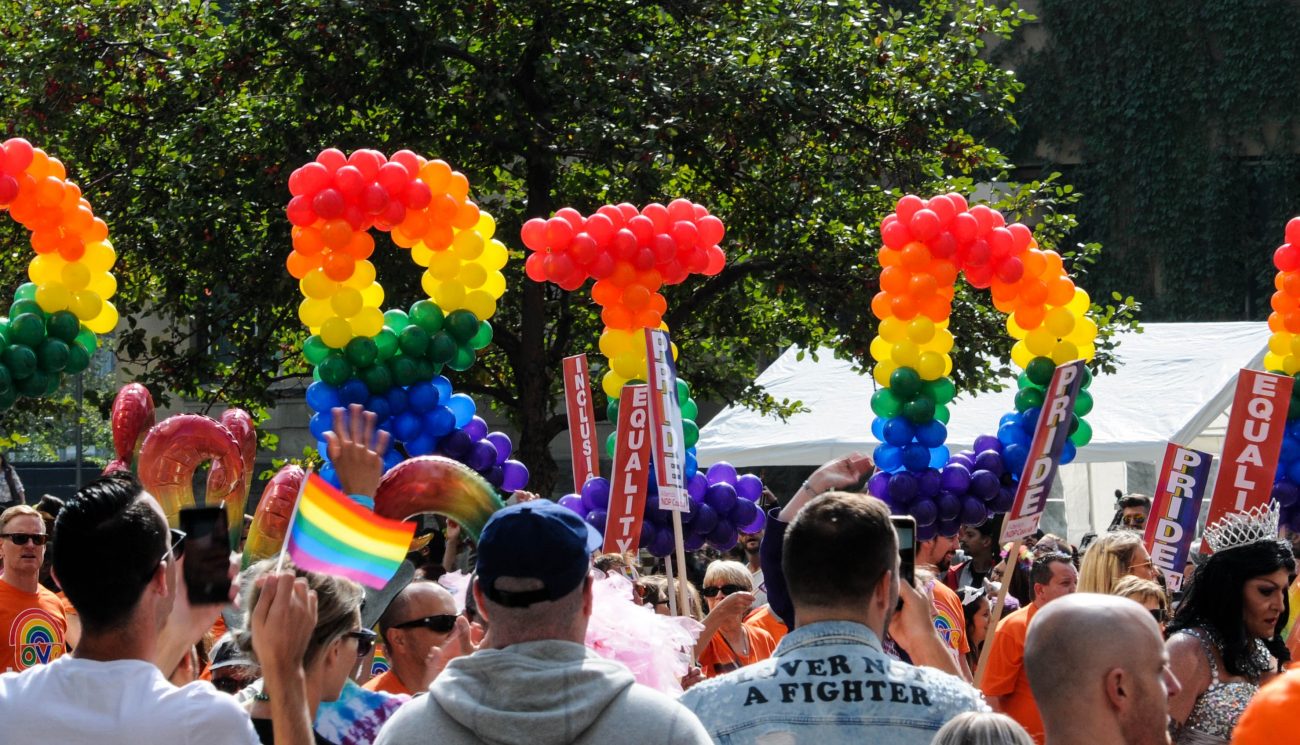As recently as 2018, one in seven LGBTQ+ people in the UK said they had been put off accessing healthcare services due to fear of discrimination because of their sexual orientation or gender identity.1 This shows there is more that needs to be done to advocate for better treatment and care for the LGBTQ+ community which many healthcare companies are taking responsibility for. But what more can they do to be trusted allies to the LGBTQ+ community?
To answer this question – which was inspired by the Pride 2020 theme You! Me! Us! We! – I teamed up with Matilda Davies, Brand Partnerships Manager at PinkNews, a digital media news source for the global LGBTQ+ community. Together we explored what the healthcare sector is currently doing to support LGBTQ+ people and came up with five areas where companies could be doing more as allies to the community.
Get the community involved
The importance of including people from the LGBTQ+ community in campaigns is more obvious in some health areas than others. There are examples from HIV where content has been successfully created with the community, such as the My Journey campaign. This was developed with and starred gay men living with HIV in videos that encouraged healthier lifestyles. This co-creation approach led to high engagement with nearly a third of gay men living with HIV taking steps to improve their future health. But the LGBTQ+ community needs to be reflected in all health areas, whether its cancer, kidney disease or diabetes – which of course can affect anyone regardless of sexual orientation or gender identity.
Reflect the community’s diversity
The LGBTQ+ community is incredibly diverse and this should be reflected in all healthcare campaigns. By including the voices of those under-represented in the community, such as transgender or non-binary people, companies can expand their messaging and engage more people in their health. A simple way to do this is by choosing images which represent the diverse spectrum of the LGBTQ+ community. But to truly be authentic, companies should speak to people who identify as LGBTQ+ and ask them how they want to be represented – and they shouldn’t be afraid to do so. The more we talk about making these inclusive adjustments, the more normalised they’ll become across all health settings, helping to reduce the number of people who feel stigmatised because of their sexual orientation or gender identity.
Use the right channels
It can be hard to get people engaged in healthy living at the best of times so it’s important that the right message is communicated through the right channels for maximum impact. This means going beyond mainstream media and looking at partnerships with LGBTQ+ owned media outlets that specifically reach the right people. This targeted investment will help to add credibility and authenticity to campaigns.
Be a true ally outside of work
Including LGBTQ+ people in campaigns is key, but the community needs to know companies aren’t just jumping on the Pride bandwagon and that they are making a longer lasting positive contribution. Companies, in or outside of the healthcare sector, can consider using their unique expertise to make a positive change, such as offering pro bono services to LGBTQ+ causes, supporting LGBTQ+ inclusion networks or supporting research on health inequalities. An example of the latter comes from a 2019 research report led by PinkNews into ageing in the LGBTQ+ community, focusing on discrimination in healthcare.2 This report was sponsored by Aegon, BCLP and Elder who shared their expertise on ageing to help shine a light on the issues faced by older LGBTQ+ people in healthcare. This kind of allyship helps to build trust with the community, as long as it lasts all year round.
Live and breathe inclusivity
Promoting inclusion externally appears superficial unless these messages are heard, felt and embraced by employees. Although not exclusive to the healthcare sector, companies working to promote health and wellbeing have the opportunity to make inclusive workplaces the new norm. Setting up an LGBTQ+ and allies employee network, and ensuring people from all levels of the company are involved is a good first step. Reviewing the language used in your company policies is also important. The benefits of inclusive workplaces are huge, from increased creativity to better health outcomes for LGBTQ+ employees.
Being an LGBTQ+ ally takes more than ‘rainbow-ified’ logos during Pride month. It’s about using the resources and platforms available to promote inclusion and diversity both internally and externally. We hope these considerations help inspire more great collaborations between industry and the community because together we are stronger.
About the author
Annie Johnston is an Account Manager on the communications team at 90TEN.
References
- Stonewall. LGBT in Britain Health Report. 2018. Available at: https://www.stonewall.org.uk/lgbt-britain-health. Last accessed: June 2020.
- PinkNews. A Review of the Needs of Older LGBT People in Later Life. Available at: https://www.pinknews.co.uk/2019/05/13/older-lgbt-people-discrimination-healthcare/. Last accessed: June 2020

